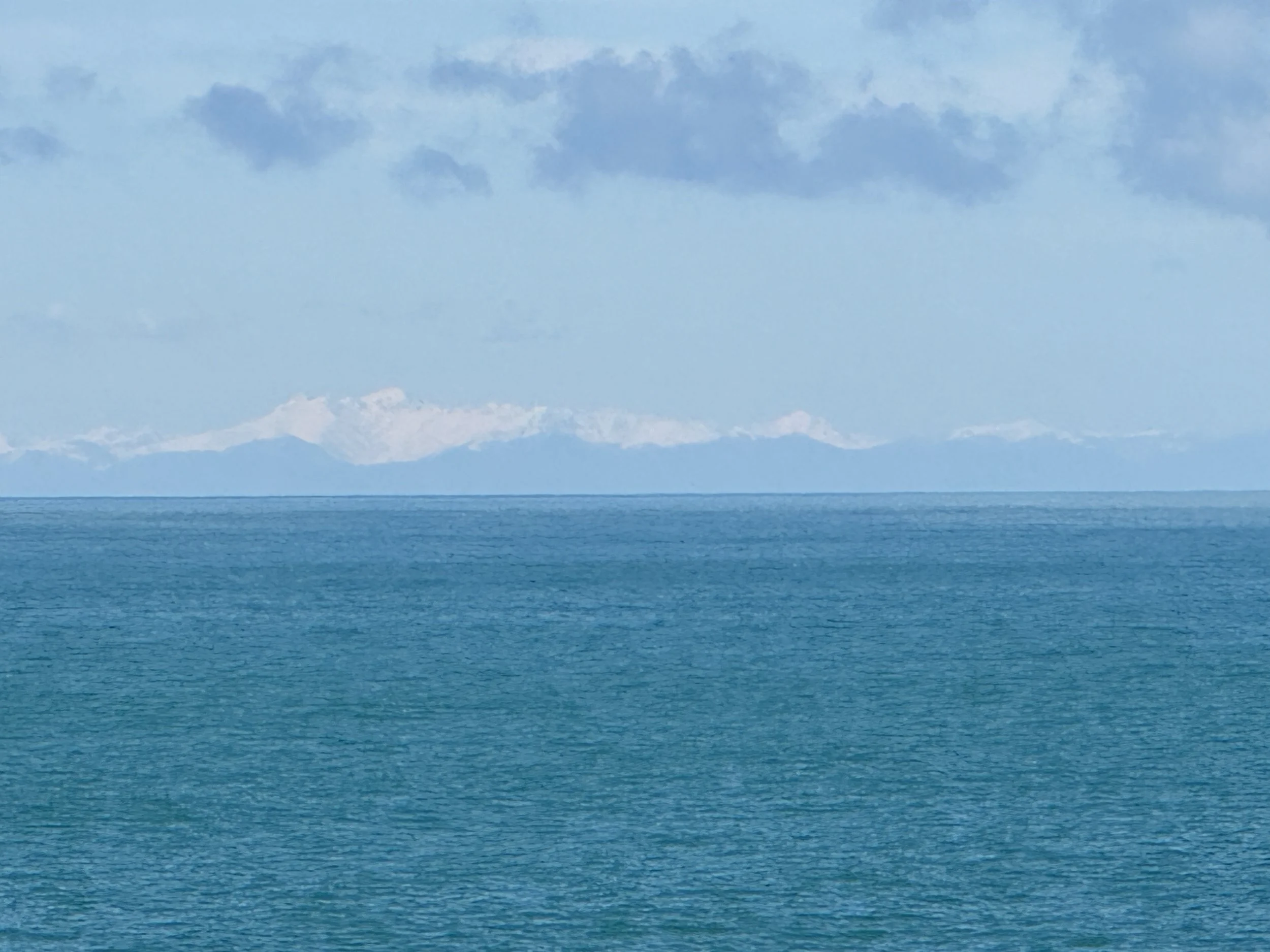Into The Ligurian Sea
It’s heartwarming to see snowcapped mountains once again. I’ve missed them.
We cruised further north from Pisa to the town of La Spezia leaving Tuscany and the Tyrrhenian Sea behind and entering the area known as Liguria. This region sweeps in a semicircle running from the Tuscan border all the way to France. It is quite stunning as it lies between the Ligurian Sea and the Maritime Alps and the Apennines mountains.
The Ligurian Coast - also called the Italian Riviera, is a section of coastline divided into two halves; from Genoa to France it’s known as the Riviera di Ponente, and from Genoa to Las Spezia it’s known as the Riviera di Levante. The words “ponente” and “levante” usually refer to westerly and easterly winds respectively, but in this context the nicknames mean “Coast of the Setting Sun” and “Coast of the Rising Sun”.
We spent a few days in La Spezia walking the parks, exploring the shops, re-provisioning, and of course catching up on chores. La Spezia is easy to tour with a pedestrian-only zone that starts at the port and continues up the hill to the central train station. The town is considered the gateway to Cinque Terre - and for good reason.

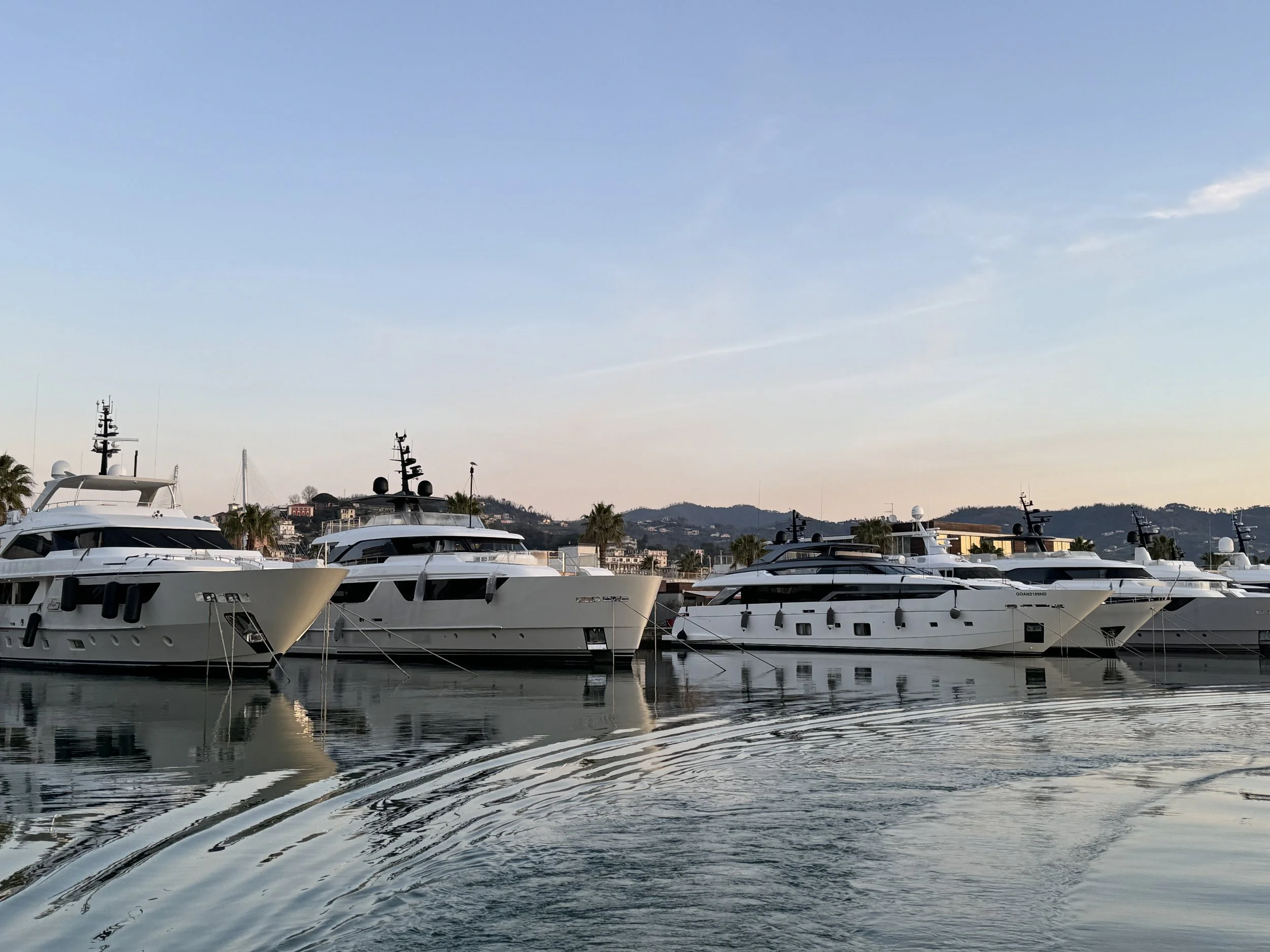



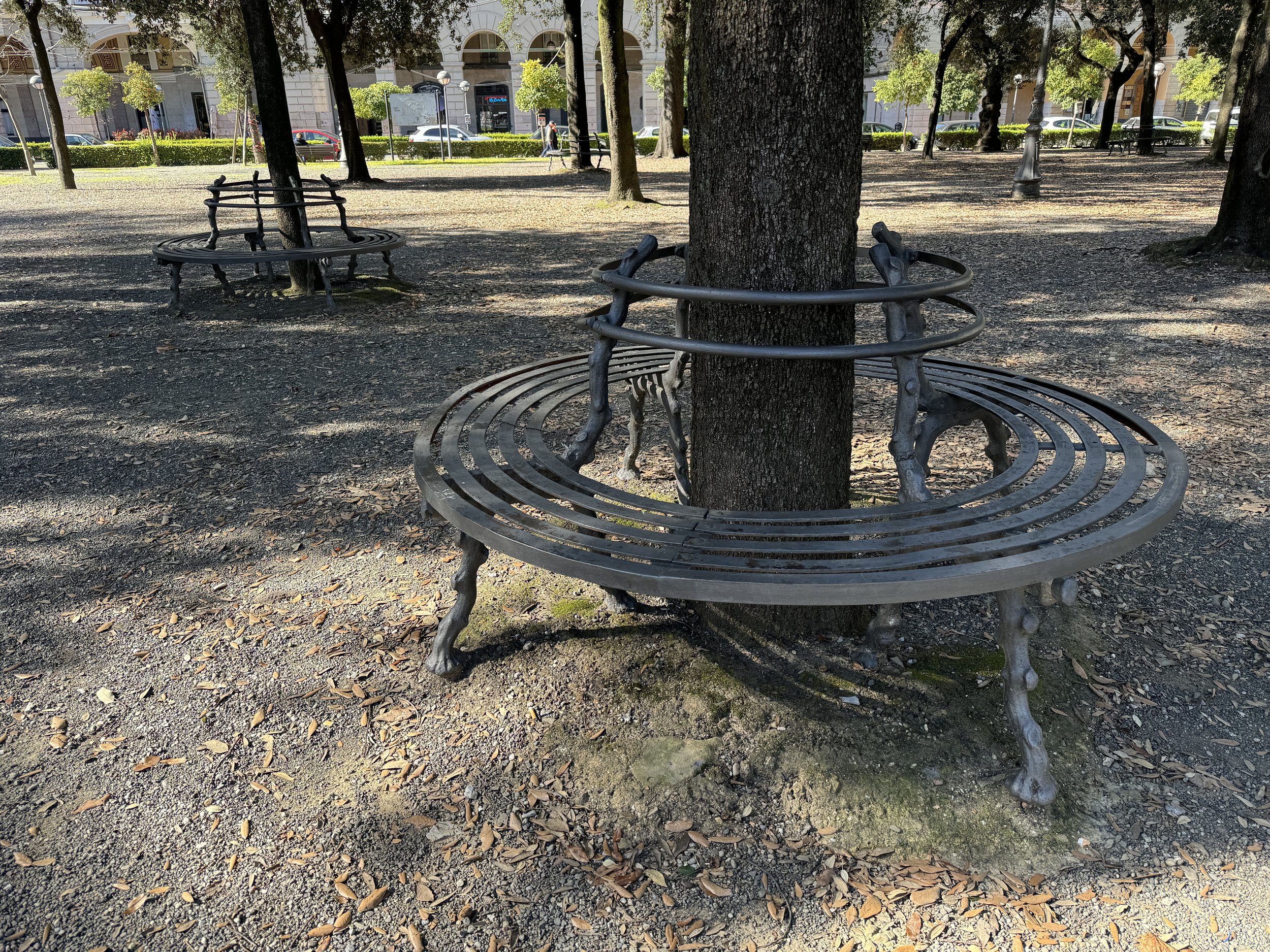
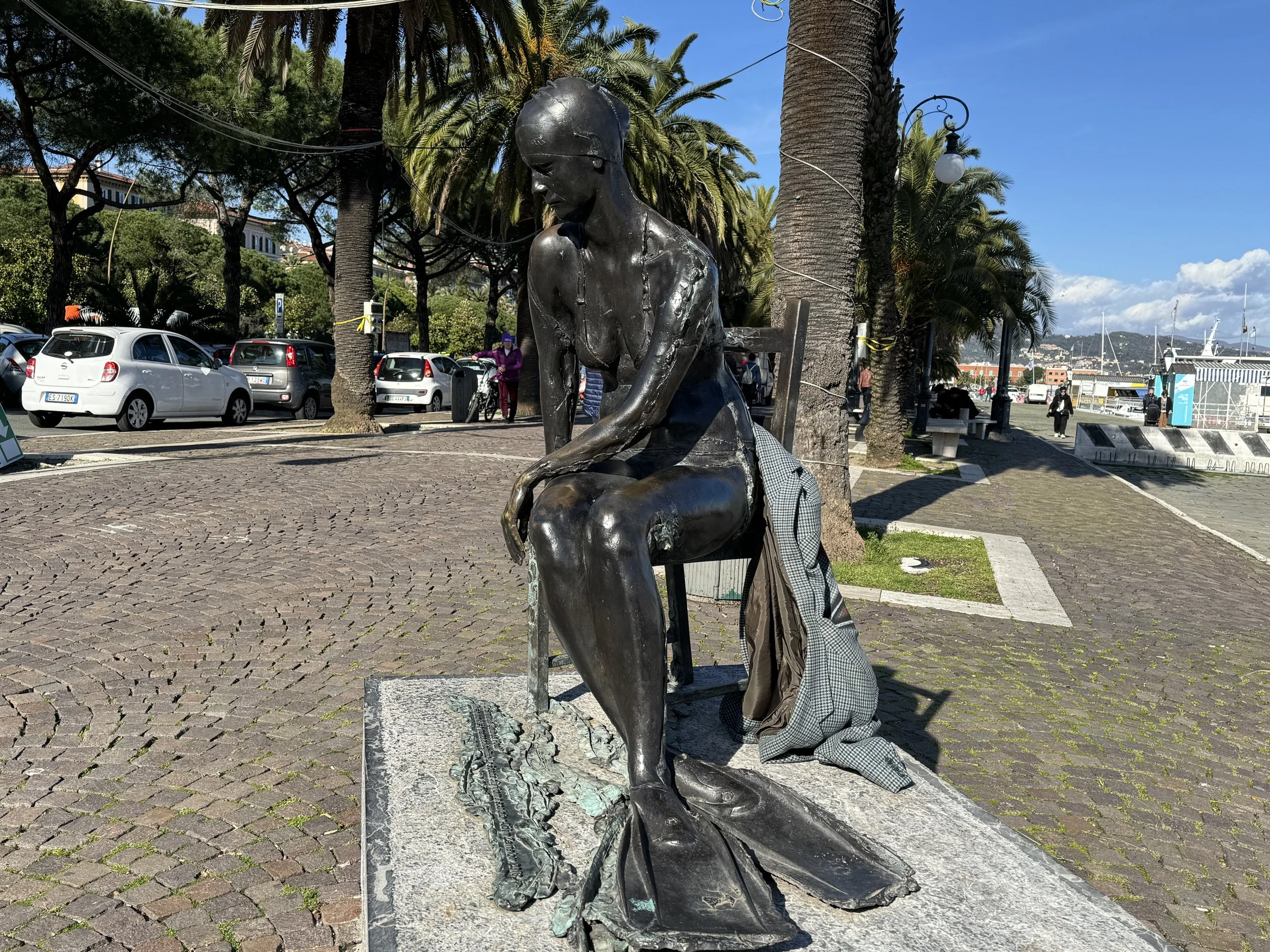


The Riviera di Levante is my kind of place. It is wild, rustic, full of hidden bays and colorful seaside villages, including the Cinque Terre. The name Cinque Terre literally means "five lands", but in this case stands for "five small, medieval villages". Over the past 1,000 years the local people have turned the forests and steep, rocky slopes into lush cultivated terraces. Apparently they have built about 7,000 kilometers of stone walls, by carrying millions of baskets of stones and soil on their heads and shoulders, up and down the hills. Once a terrace was ready, they planted wine grapes, vegetables and basil, along with olive, lemon and orange trees.
It was only a few decades ago that the five fishing villages of the Cinque Terre were just that – fishing villages. If you’ve heard of the Cinque Terre National Park then you know that there is a notable hike between the five towns; Riomaggiore, Manarola, Corniglia, Vernazza, and Monterosso. The park is an extremely popular tourist destination. The trail that links the towns is known as the Blue Trail or Sentiero Azzurro in Italian, and you can easily hike through all five towns in a single day. In the past, the rough trail winding along the cliffs between the villages was used primarily for farmers transporting crops – olives, grapes, and citrus. Today there are wayfinding paint marks and some sections are paved with field stone. Moreover, it is absolutely stunning. There’s now an entrance fee to hike, which helps them maintain the trails, and there are park passes which you can buy that also include the train, so it’s easy to access from most anywhere. From what I’ve read, parts of the trail hugs the cliff and can get quite narrow in places with a very steep drop-off down to the rocky coast. Several hikers said if you’re afraid of heights it is quite unnerving.


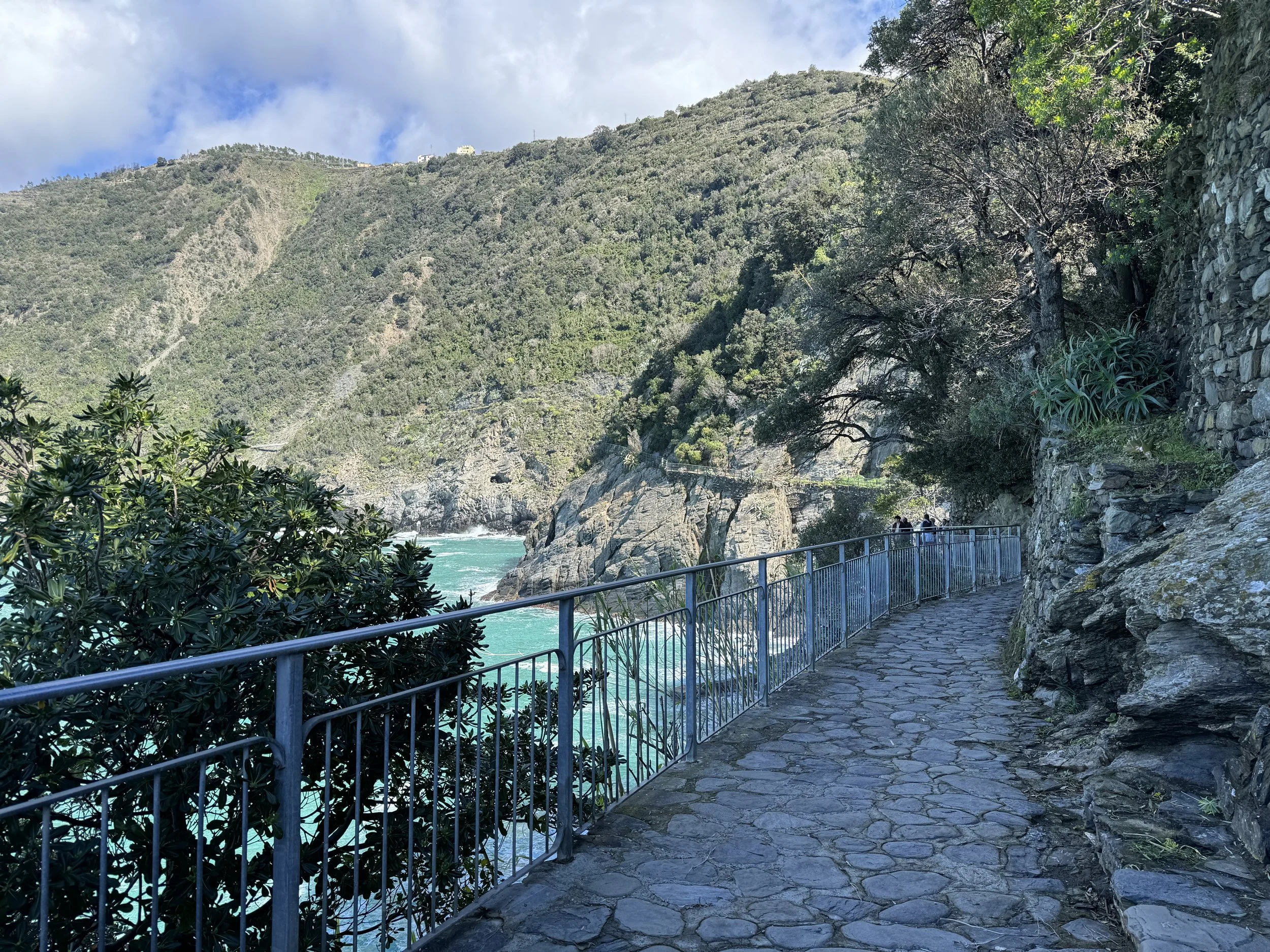
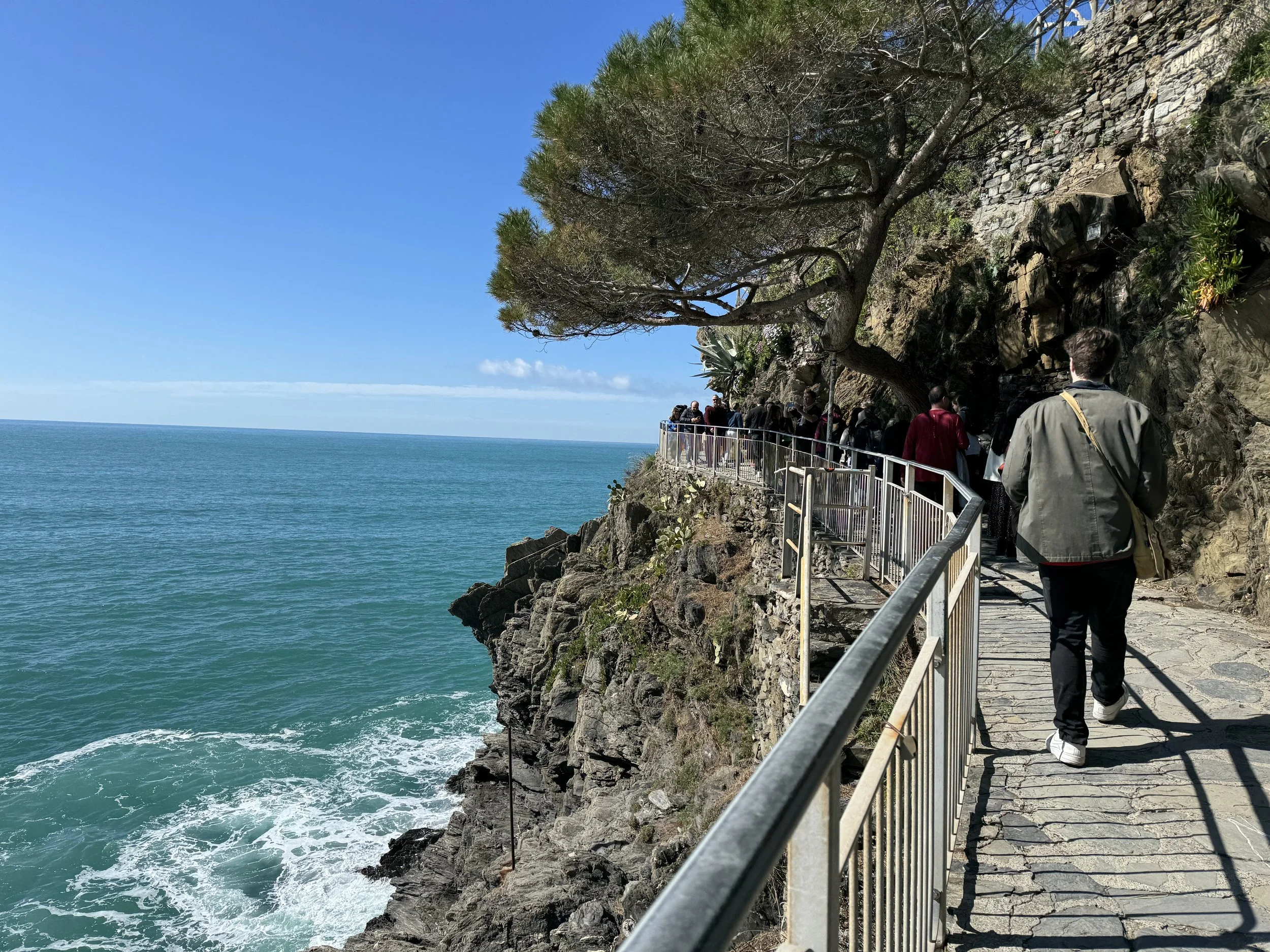
I was fighting a cold that day and wasn’t up for ‘hiking’ so we visited the towns by train and meandered around each village before hopping the rail onward. We rode all the way to Levanto before turning back. Despite feeling a bit under the weather, by the end of the day we had walked over 10 miles (16 km) and climbed 44 flights of stairs!
We found each of the villages had a slightly unique feel to it. Three of them have a cascade of multi-colored houses in the typical Ligurian style, all tightly clustered around a tiny natural harbor carved out between the rocks. The quintessential Cinque Terra image. There are loads of restaurants and cafes and most of the buildings are now airbnbs and boutique hotels. Manarola was perhaps my favorite town of the three. It felt less touristy, a little more homey and less polished. Then there’s Monterosso which is the largest town and has the only sandy beach in the area. It has lots of hotels and shops and a long promenade along the shore. The fifth village, Corniglia, is the only one not on the water. It is perched on a cliff 320 feet (~100 meters) above sea level. We did not disembark the train in Corniglia so I don’t have a sense of it, but I read that it is the least visited of the five and, as one might expect, is known for it’s spectacular sunsets.





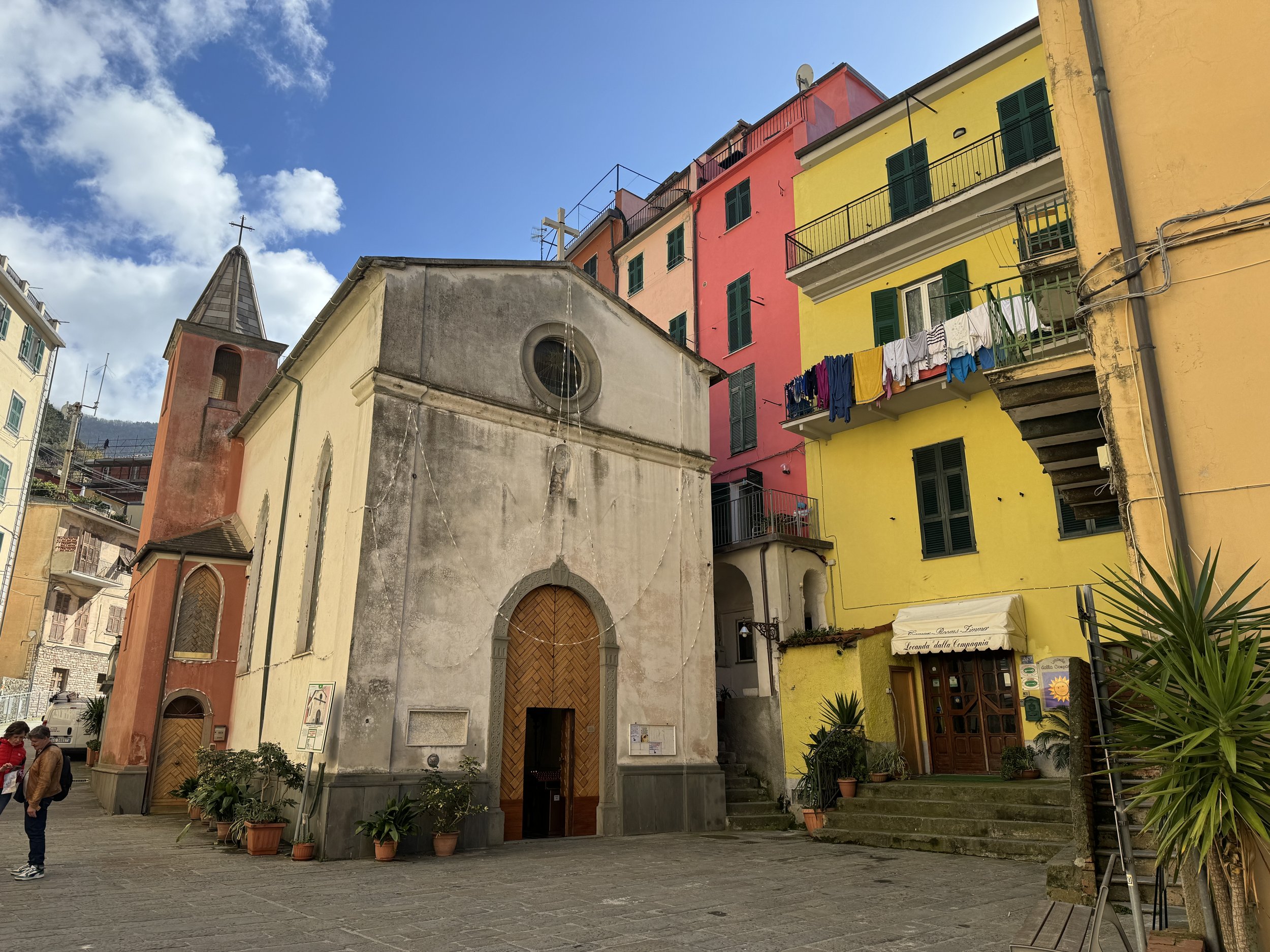




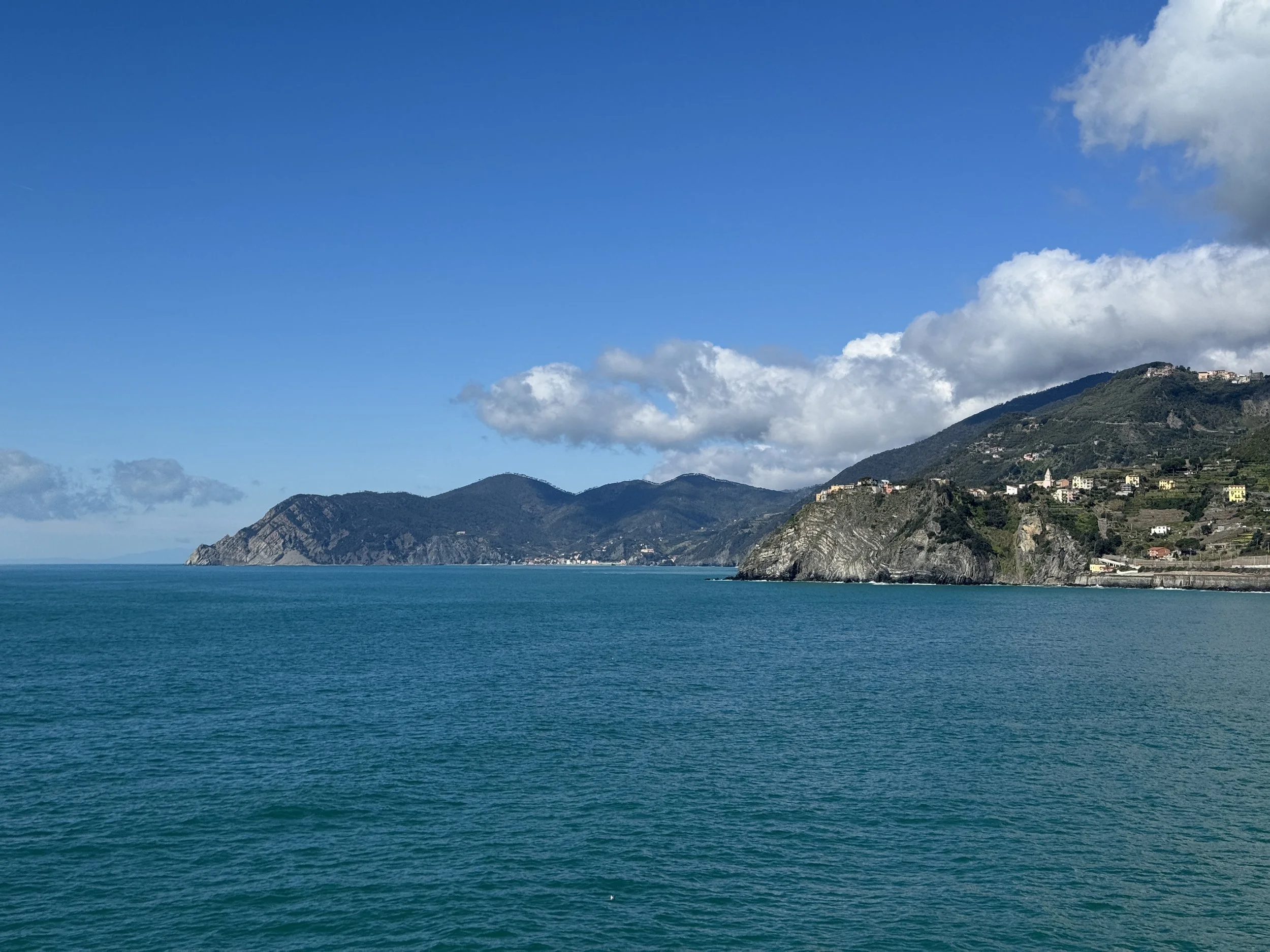
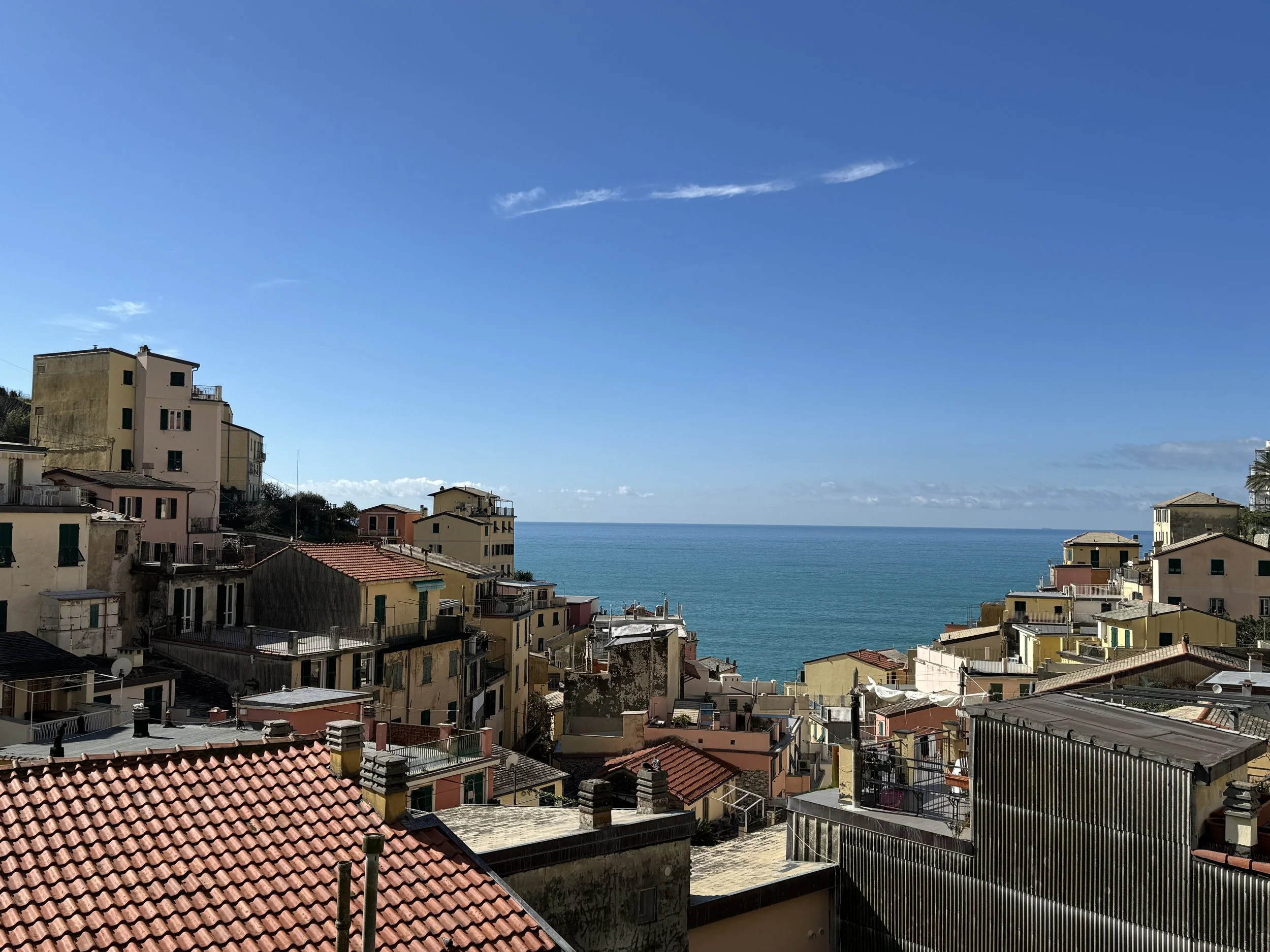

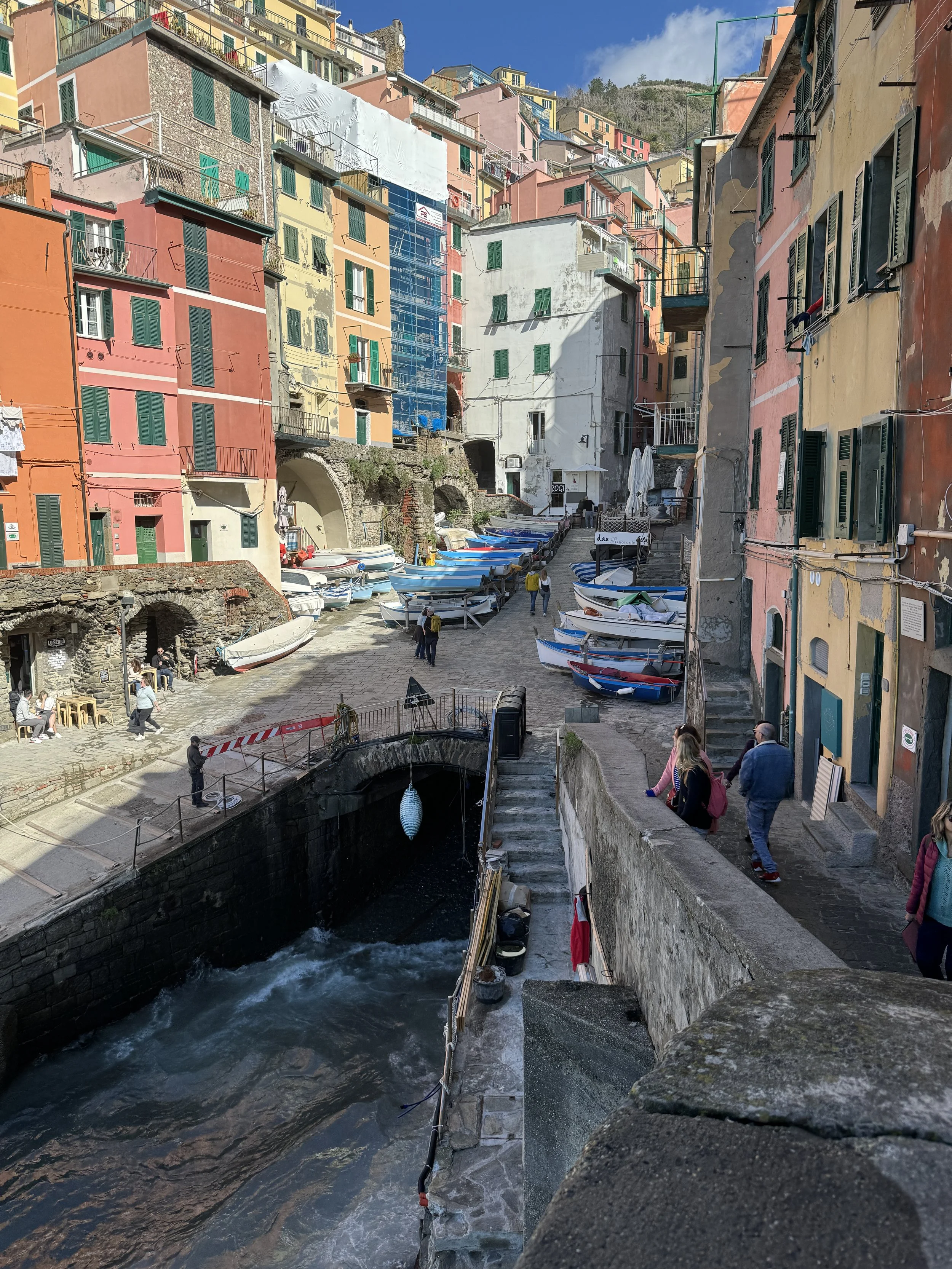


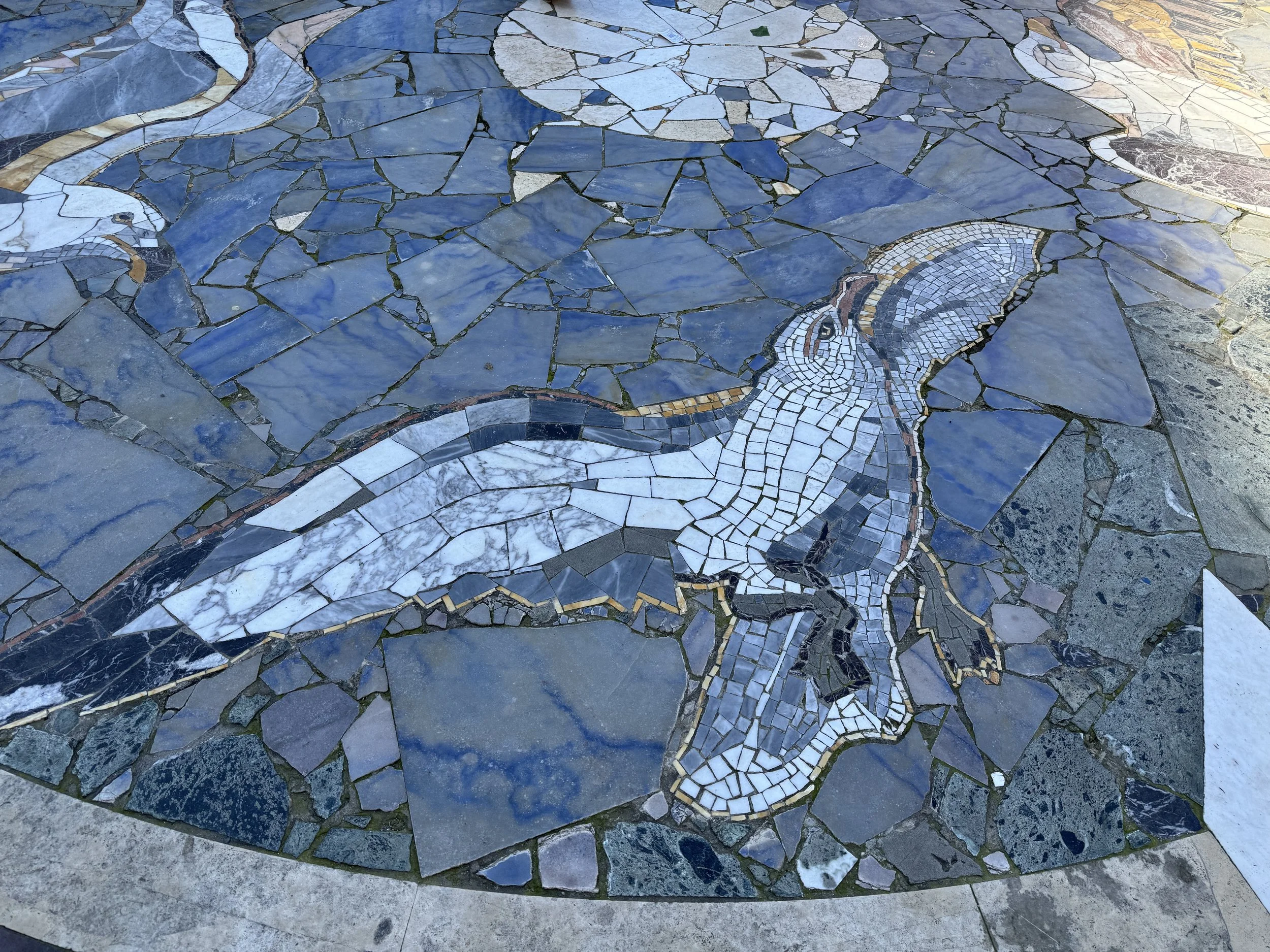


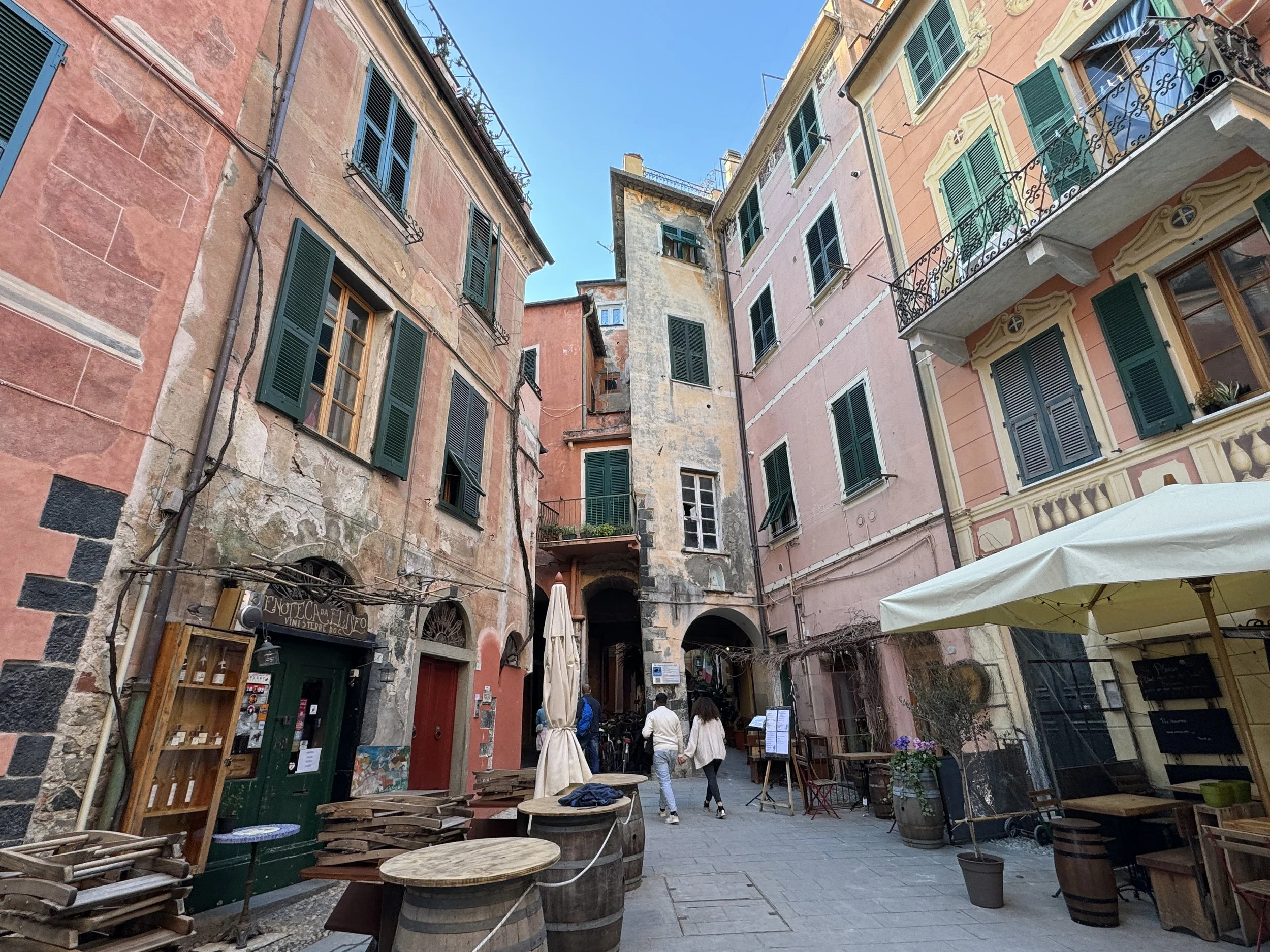




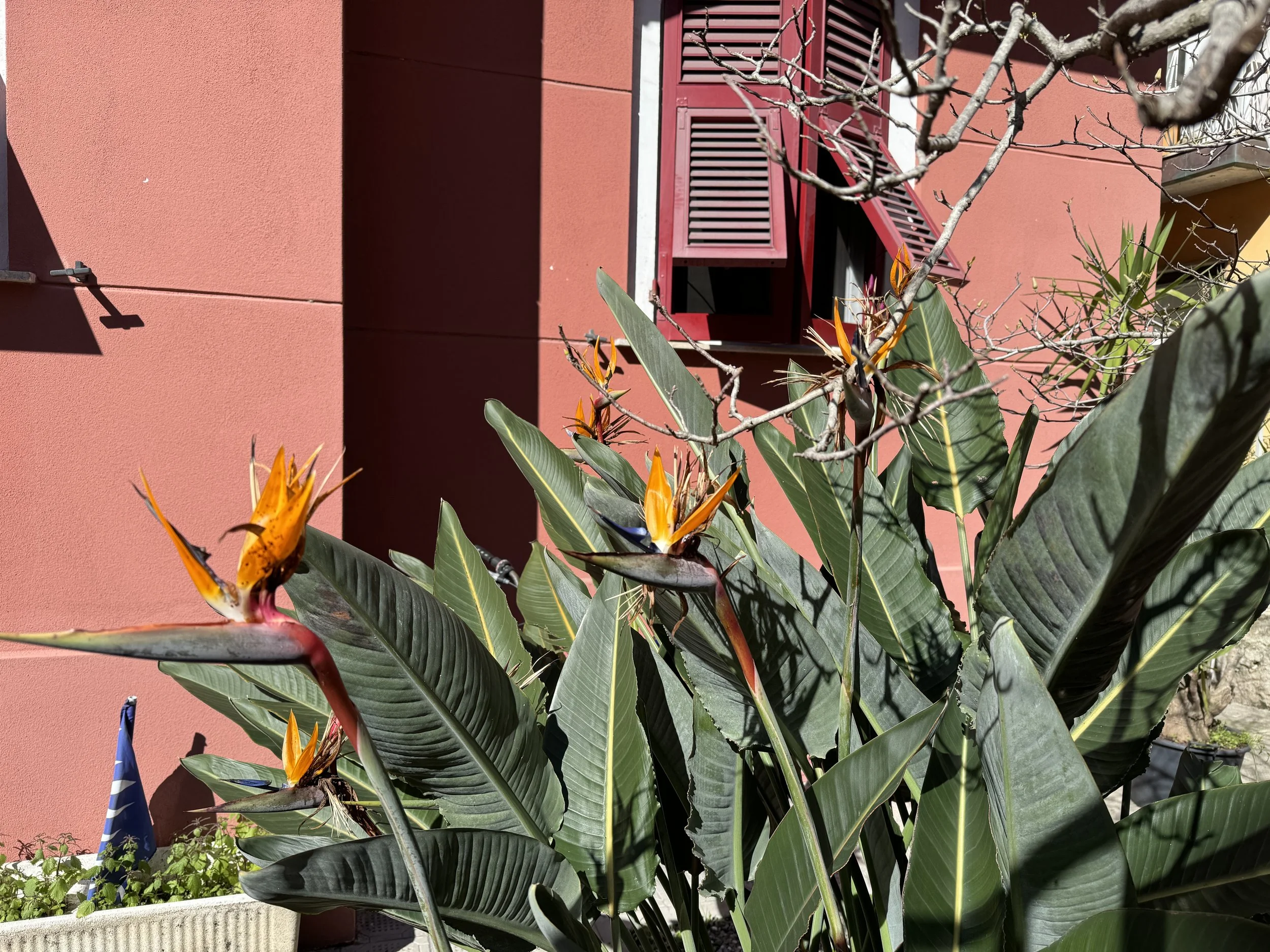

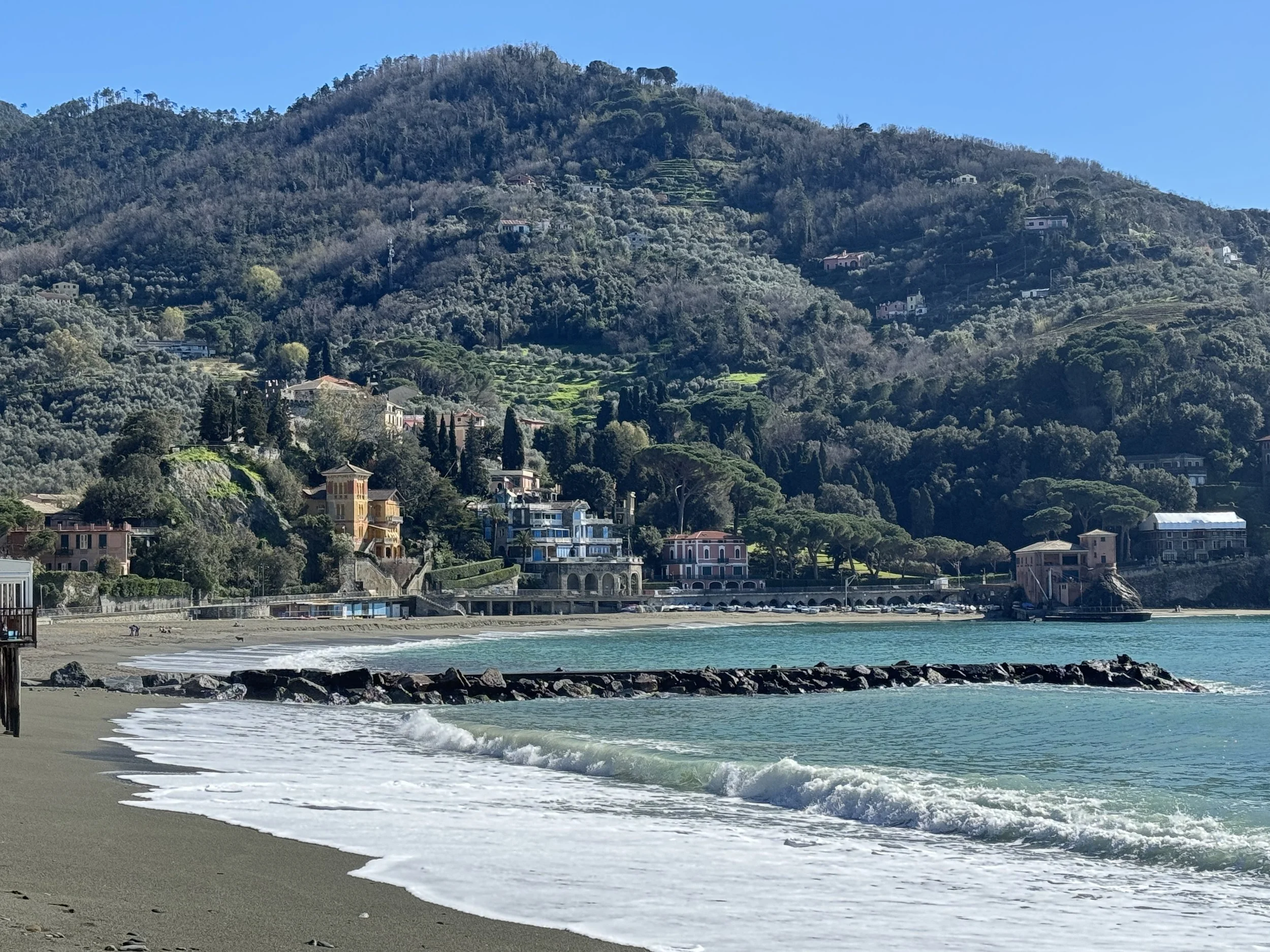
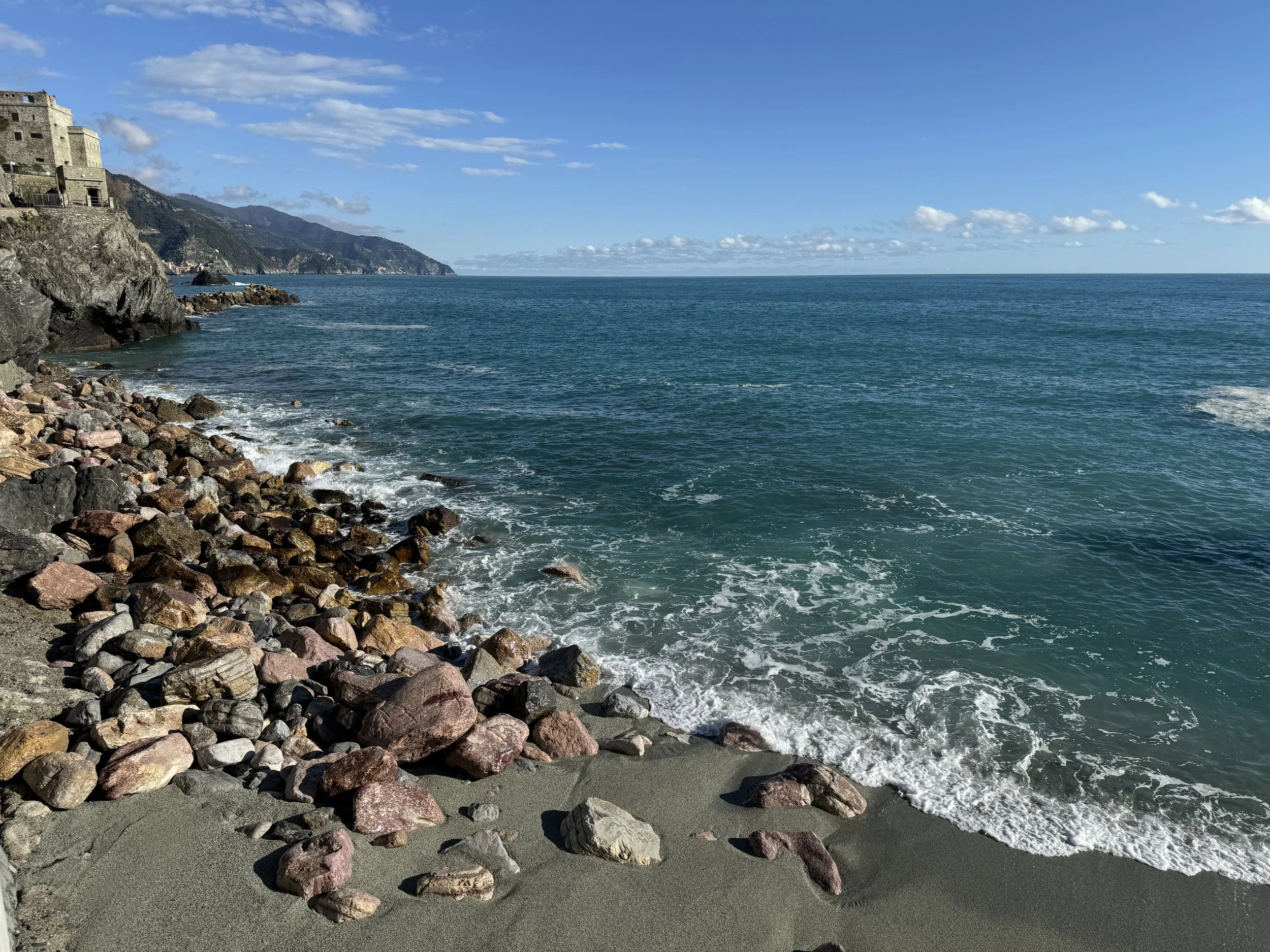
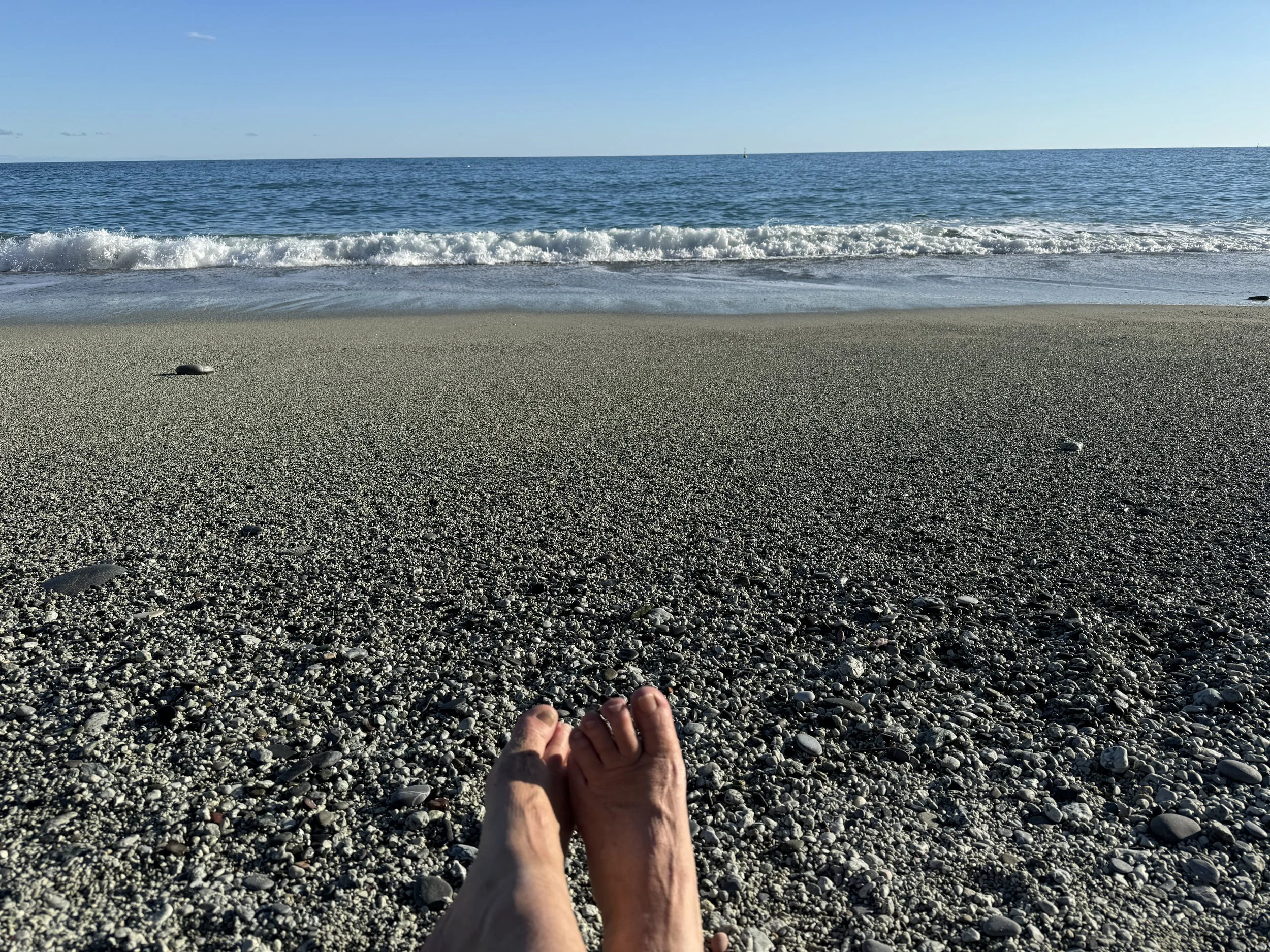



Seafood plays a prominent role in Ligurian cuisine. Buridda, a traditional Ligurian specialty, is a variety of fresh fish (I never figured out which one) stewed in an aromatic tomato sauce flavored with garlic, herbs, carrots, onion and olive oil. It is said to be the region's specialty dish. On almost every menu you will also find salted anchovies in every way, shape and form: fried, stuffed, fresh, smoked. On focaccia, pizza, pasta and braised with cabbage and onions.
We’d also been told to sample the traditional Ligurian Trofie Pasta. This is a short, twisted-shaped pasta that is thicker in the center and thinner at the ends.
The ridges of the pasta make it the perfect vehicle for trapping Ligurian pesto. This pesto sauce is probably the most common ingredient in Ligurian cuisine and is often blended with pomodoro and other sauces. In fact, the region is considered to be the birthplace of pesto sauce. Not surprisingly, all the ingredients are local products; olive oil, basil, garlic, pine seeds, and hard sheep’s cheese.
They also produce wine in Cinque Terre, but in very small quantities. Because of its stone walls and steep mountains, cultivating grape vines in Liguria can be challenging. It is typically done by hand, which greatly limits production. The largest portion of these are white wines and despite the improved quality of these wines over time, most come from small artisan wineries and can be difficult to obtain outside of the borders of Liguria. We found these white wines to be a bit on the sweeter side.
We spent a long, exhausting and wonderful day visiting Cinque Terre. Tomorrow we will prepare for our next voyage which will take us further up the Italian coast. Stay tuned.



